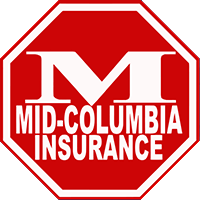Cheapest SR 22 Insurance
Marysville Washington
Owner & Non-Owner SR22s

Where do you get SR22 insurance?
Some preferred insurance carriers, if you inform them you need an SR22, might at renewal raise your rates significantly or cancel your policy. If you don’t want to jeopardize your existing coverage, talk to us about a Broad Form SR22 policy. It can be very inexpensive and should allow you to keep your preferred rates.
What is Non-Owner SR22 insurance?
In Washington state we have a broad form policy that is a better option for those needing a stand-alone SR22 policy than a non-owned policy because non-owned policies don’t cover many borrowed vehicles but a broad form policy will. So, if you don’t want to lose your primary insurance provider due to your SR22 requirement, buying a separate broad form SR22 policy to handle the SR22 requirement may be a smart move.
Why is an SR22 insurance filing required?
- Driving under the influence (DUI) (aka driving while intoxicated (DWI)) or other alcohol related violations
- Serious traffic offense convictions, such as reckless or negligent driving
- Several traffic offenses in a short time period
- Driving with a suspended license
- At-Fault accident while driving without insurance, and even
- Driving without insurance in Oregon (even though you live in Washington)
The SR-22 requirement just means that proof of insurance has to be sent to the state and is one step towards getting your license reinstated and getting you back on the road.
I don’t own a car, do I still need to file an SR22?
If you don’t own a car and need an SR22, no problem. Washington drivers are eligible for a Broad Form insurance policy that provides coverage for any car you drive for personal use — owned or non-owned. We are the Broad Form SR22 Insurance experts.
How much does SR22 insurance cost a month?
This is why it is important to work with an independent agency like Mid-Columbia Insurance that partners with multiple companies to be sure you are getting more than one option to choose from.
Can I get SR22 insurance without a car?
A broad form policy is a smart choice for someone who does not own a car but needs an SR22 and wants to be able to drive. Once you get a car you can either get a policy on that car or keep your broad form policy since it covers owned and non-owned vehicles.
What’s the difference between SR22 and regular insurance?
What happens if I am late paying my SR22 insurance?
Late payment frustrations can be huge. Multiple calls to the DOL and your insurance company, proving to the DOL you have coverage, and trying to get avoidable DOL fees removed just because you got behind on your car insurance premiums.
How long is an SR22 insurance form required?
Be sure not to cancel your SR22 before the requirement is lifted since your insurer is required to inform the DOL that you no longer have an SR22 and your license could be suspended or revoked again. A simple call to the DOL is usually all that is required to find out how long you will need to carry the SR22.
What is an SR22 insurance policy?
Although referred to as “SR-22 insurance,” An SR-22 is not actually insurance but instead is simply an endorsement to regular insurance policy. This endorsement is filed with the state as proof that you have insurance. The SR22 notifies the state that you have insurance in force and promises to notify them if your policy cancels.
Do I need SR22 and regular insurance?
What if I need an SR22 in one state but live in another state?
What happens if my SR22 insurance cancels?
When your SR22 policy cancels or lapses, your insurance company is legally required to send an SR-26 form to the state to let them know that your policy is no longer active. If not handled promptly, the state will re-suspend your driver’s license and you will need to jump through all the hoops and pay all the fees required to reinstate your license once again.
Top Places to See By Marysville
Just the Facts about Marysville
Marysville is a city in Snohomish County, Washington, United States, part of the Seattle metropolitan area. The city is located 35 miles (56 km) north of Seattle, adjacent to Everett on the north side of the Snohomish River delta. It is the second-largest city in Snohomish County after Everett, with a population of 60,020 in the 2010 U.S. census. As of 2015, Marysville is furthermore the fastest-growing city in Washington state, growing at an annual rate of 2.5 percent.
Marysville was received in 1872 as a trading say by James P. Comeford, but was not populated by extra settlers until 1883. After the town was platted in 1885, a grow old of growth brought new buildings and industries to Marysville. In 1891, Marysville was incorporated and welcomed the completed Great Northern Railway. Historically, the Place has subsisted on lumber and agrarian products; the buildup of strawberry fields in Marysville led to the city mammal nicknamed the “Strawberry City” in the 1920s.
The city experienced its first greeting of suburbanization in the 1970s and 1980s, resulting in the evolve of other housing and flyer areas. Between 1980 and 2000, the population of Marysville increased five-fold. In the further on 2000s, annexations of unincorporated areas to the north and east expanded the city to greater than 20 square miles (52 km2) and brought the population greater than 60,000.
Marysville is oriented north–south along Interstate 5, bordering the Tulalip Indian Reservation to the west, and State Route 9 to the east. Mount Pilchuck, whose 5,300-foot-high (1,600 m) peak can be seen from various points in the city, appears in the city’s flag and seal.
Marysville was usual in 1872 by government-appointed Indian agent James P. Comeford, an Irish immigrant who had served in the Civil War, and his wife Maria as a trading post upon the Tulalip Indian Reservation. The reservation, located to the west of modern-day Marysville, was time-honored by the Point Elliot Treaty of 1855, signed by local Native American tribes and territorial overseer Isaac Stevens at modern-day Mukilteo. The treaty’s signing opened most of Snohomish County to American settlement and advertisement activities, including logging, fishing and trapping.
Source: Marysville, Washington in Wikipedia


